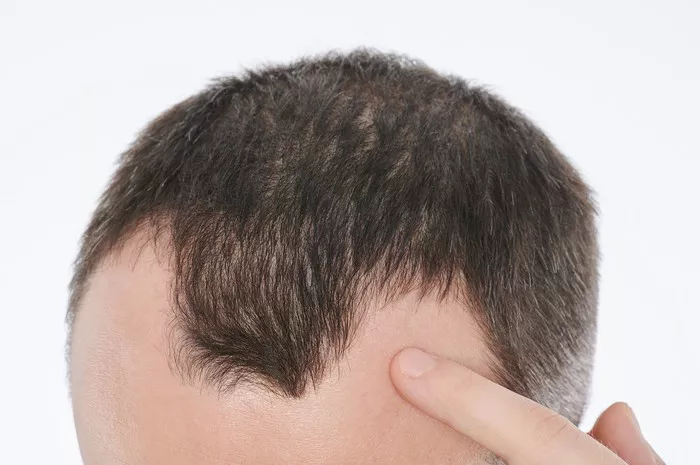The journey to combat hair loss often leads individuals to explore various treatments and interventions, with one prevalent question looming large – can a hair transplant put an end to the relentless cycle of hair loss? In this article, we delve into the intricacies of hair transplants and examine whether they hold the key to stopping hair loss once and for all.
Understanding the Nature of Hair Loss: A Complex Puzzle
Before exploring the potential of hair transplants, it’s crucial to comprehend the underlying factors contributing to hair loss. Genetics, hormonal changes, age, and lifestyle factors all play significant roles in the complex puzzle of hair loss. While various treatments address specific aspects of this multifaceted issue, achieving a definitive solution remains a challenge.
The Mechanics of Hair Transplants: Restoring Natural Growth
Hair transplants operate on the principle of redistributing hair follicles from areas of robust growth, typically the back or sides of the head, to areas experiencing hair thinning or baldness. This surgical procedure, conducted by a skilled professional, involves harvesting individual hair follicles and strategically implanting them into the targeted areas. The goal is to restore natural hair growth patterns and create a fuller, more aesthetically pleasing hairline.
A Closer Look at Transplanted Hair: A Lifelong Investment?
While hair transplants can indeed provide a lasting solution to areas of hair loss, it’s essential to clarify that the transplanted hair does not possess a superhuman resistance to the factors that contribute to hair loss. The transplanted hair follicles are taken from donor areas that are resistant to the hormone dihydrotestosterone (DHT), a primary contributor to male and female pattern baldness. Therefore, the transplanted hair retains its resistance to DHT, offering a more permanent solution compared to other non-surgical interventions.
The Limitations: Addressing Progressive Hair Loss
While a hair transplant can be highly effective in restoring hair to specific areas, it does not address the underlying causes of progressive hair loss. If the individual continues to experience ongoing hair loss in untreated areas, the results of the hair transplant may be overshadowed by the natural progression of hair thinning or balding in other regions. Therefore, it’s crucial to view a hair transplant as part of a comprehensive strategy for managing hair loss.
Combining Therapies: A Holistic Approach to Hair Care
To optimize the results of a hair transplant and address ongoing hair loss, a holistic approach to hair care is recommended. This may involve incorporating medical therapies, such as topical minoxidil or oral finasteride, to address hormonal factors contributing to hair loss. Additionally, adopting a healthy lifestyle, managing stress, and using appropriate hair care products can contribute to the overall well-being of the hair and scalp.
The Importance of a Professional Consultation: Tailoring Solutions to Individuals
Before embarking on a hair transplant journey, it’s crucial to consult with a qualified and experienced hair restoration professional. A thorough evaluation of individual factors, including the extent of hair loss, donor hair availability, and the potential for ongoing hair loss, allows for the development of a customized treatment plan. This plan may involve a combination of surgical and non-surgical interventions to achieve the most effective and natural-looking results.
Understanding Expectations: Realistic Outcomes of Hair Transplants
While hair transplants can provide remarkable improvements, it’s essential for individuals to have realistic expectations regarding the outcomes. The success of a hair transplant depends on factors such as the skill of the surgeon, the quality of donor hair, and the individual’s commitment to post-operative care. While the transplanted hair is generally permanent, the existing, untreated hair may still be subject to ongoing hair loss, necessitating a long-term commitment to comprehensive hair care.
Post-Transplant Care: Nurturing the Newly Grafted Hair
The success of a hair transplant extends beyond the operating room. Post-transplant care is crucial for ensuring optimal results and preserving the integrity of the newly grafted hair. This may involve following specific instructions provided by the surgeon, avoiding exposure to harsh chemicals or excessive heat, and using recommended hair care products. Diligent post-transplant care contributes to the longevity and natural appearance of the transplanted hair.
See Also: Will Hair Grow Back After Stopping Statins: A Quick Guide
Conclusion: A Step Towards Long-Term Hair Restoration
In the quest to stop hair loss, a hair transplant can be a significant and lasting step. While it addresses specific areas of baldness by transplanting resistant hair follicles, it’s essential to recognize that it is not a panacea for all types of hair loss. Combining a hair transplant with a holistic approach to hair care, including medical therapies and lifestyle modifications, provides a more comprehensive strategy for managing ongoing hair loss. With realistic expectations, professional guidance, and diligent post-transplant care, individuals can embark on a journey towards long-term hair restoration and renewed confidence.


